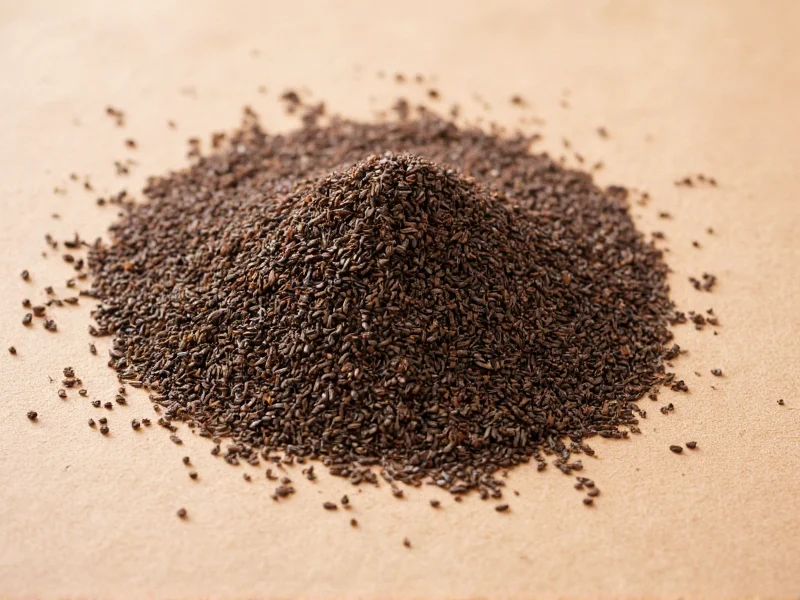If you're looking for a nigella seed substitute, the best options are caraway seeds for similar earthy flavor, black sesame seeds for visual appearance, or a blend of cumin and oregano for flavor approximation. Use a 1:1 ratio when substituting, though caraway has a stronger flavor so you may want to use slightly less. For Indian dishes, kalonji (true nigella) can sometimes be replaced with mustard seeds, while Middle Eastern recipes often work well with a touch of sumac plus sesame seeds.
When you're in the middle of cooking and realize you've run out of nigella seeds, finding the right substitute can save your recipe. Nigella sativa, commonly known as black cumin, kalonji, or black sesame (though it's not actually sesame), has a distinctive flavor profile that's essential in many Middle Eastern, Indian, and Eastern European dishes. Understanding what makes nigella seeds unique helps identify the most appropriate alternatives for your specific culinary needs.
Understanding Nigella Seeds and Their Role in Cooking
Nigella seeds have a complex flavor profile—earthy with subtle peppery notes, hints of onion, and a slight bitterness. They're commonly used as a finishing spice sprinkled on breads like naan and focaccia, in pickles, curries, and spice blends such as panch phoron. When seeking a nigella seed replacement, consider both the flavor contribution and visual appearance required by your specific recipe.
Top 6 Nigella Seed Substitutes Ranked by Effectiveness
Not all substitutes work equally well across different cuisines and dishes. Here's a comprehensive comparison of your best options for nigella seed alternatives:
| Substitute | Flavor Comparison | Best Used In | Substitution Ratio | Special Considerations |
|---|---|---|---|---|
| Caraway seeds | Similar earthy profile but stronger, more anise-like | Breads, rye dishes, European recipes | 3:4 (use 25% less) | Stronger flavor—start with less and adjust |
| Black sesame seeds | Milder, nuttier, no peppery notes | Visual replacement in breads and flatbreads | 1:1 | Provides similar appearance but different flavor |
| Cumin + oregano blend | Recreates earthy and herbal notes | Middle Eastern dishes, dressings | 1/2 tsp cumin + 1/4 tsp oregano per tsp nigella | Best dry spice blend substitute for flavor approximation |
| Fennel seeds | Sweeter, more licorice-like | Indian breads, some pickling recipes | 1:1 | Use only when visual appearance is primary concern |
| Mustard seeds | More pungent, sharper heat | Indian curries and dals | 1:1 | Best for Indian cuisine where nigella is used in tempering |
| Sumac + sesame blend | Tangy with nutty notes | Middle Eastern dishes, salads | 1/2 tsp sumac + 1/2 tsp sesame per tsp nigella | Excellent for za'atar-style applications |
Cuisine-Specific Substitution Guidance
The best nigella seed alternative varies significantly depending on the cuisine you're preparing. Understanding these regional differences ensures your substitute enhances rather than detracts from your dish.
For Indian Cuisine (Kalonji Substitutes)
In Indian cooking, where nigella seeds are called kalonji, they're often used in tempering (tadka) for curries and dals. When seeking an Indian recipe nigella seed replacement:
- Mustard seeds work well in many savory dishes, providing similar popping texture
- A pinch of asafoetida (hing) combined with cumin can mimic some of the pungent qualities
- For breads like naan, black sesame seeds maintain visual appeal while providing some similar nuttiness
For Middle Eastern Dishes
Middle Eastern recipes often use nigella seeds in spice blends, on breads, and in dips. Effective Middle Eastern nigella seed alternatives include:
- A combination of sumac and black sesame seeds replicates both color and some flavor elements
- Caraway works well in dishes like kubaneh (Jewish Yemenite bread)
- For za'atar blends, increase the thyme and add a touch of toasted sesame
For Eastern European and Mediterranean Cooking
In recipes like Romanian cozonac or Turkish breads, where nigella seeds provide both flavor and visual contrast:
- Caraway seeds are the closest flavor match for most European applications
- Black sesame maintains the visual "speckled" appearance on breads
- A small amount of fennel pollen can add complexity when combined with sesame
What NOT to Use as Nigella Seed Substitutes
Some commonly suggested alternatives don't work well as nigella replacements. Avoid these when seeking an authentic nigella seed substitute:
- Regular sesame seeds—they lack the visual contrast and have a completely different flavor profile
- Black pepper alone—too one-dimensional and lacks the earthy complexity
- Onion seeds (kalonji confusion)—true nigella is often mislabeled as "onion seeds" in some regions, but actual onion seeds (nigella is not related to onions) won't work as substitutes
- Poppy seeds—different texture and flavor, though sometimes used for visual similarity in breads
Storage Tips for Nigella Seeds and Substitutes
Proper storage preserves the flavor of both nigella seeds and their substitutes. Store whole seeds in airtight containers away from light and heat. For maximum freshness:
- Nigella seeds retain quality for 1-2 years when stored properly
- Caraway and cumin maintain potency for about 1 year
- Pre-ground substitutes lose flavor more quickly than whole seeds
- For best results, toast whole seed substitutes briefly before use to enhance flavor
Creating Your Own Nigella Seed Replacement Blend
For the most accurate nigella seed substitute in recipes where flavor is critical, create a custom blend:
- Combine 2 parts black sesame seeds (for appearance)
- Add 1 part caraway seeds (for earthy base)
- Include 1/2 part dried oregano (crumbled) for herbal notes
- Optional: A pinch of black pepper for heat
This homemade nigella seed alternative works particularly well in Middle Eastern bread recipes and spice blends where both visual and flavor elements matter.











 浙公网安备
33010002000092号
浙公网安备
33010002000092号 浙B2-20120091-4
浙B2-20120091-4